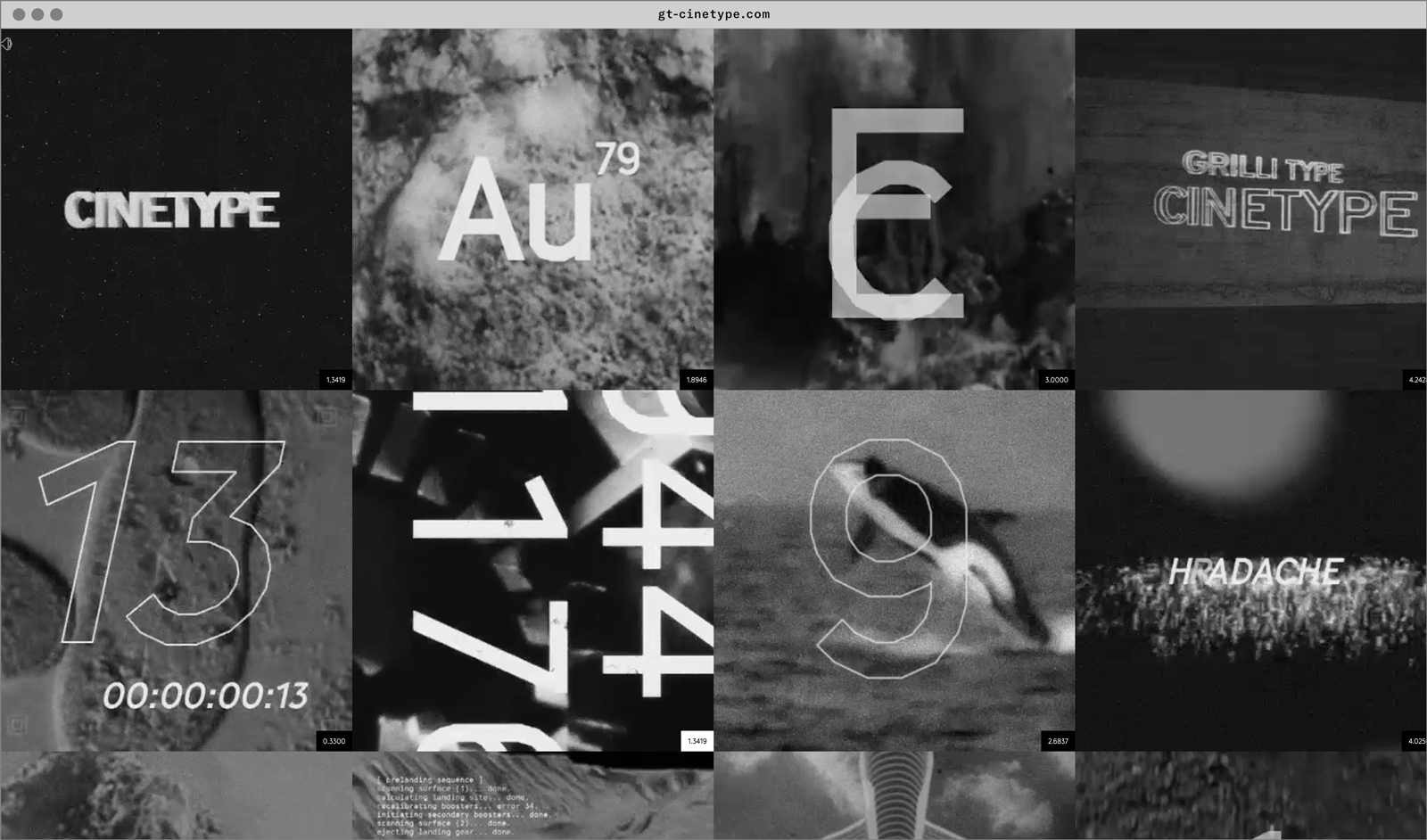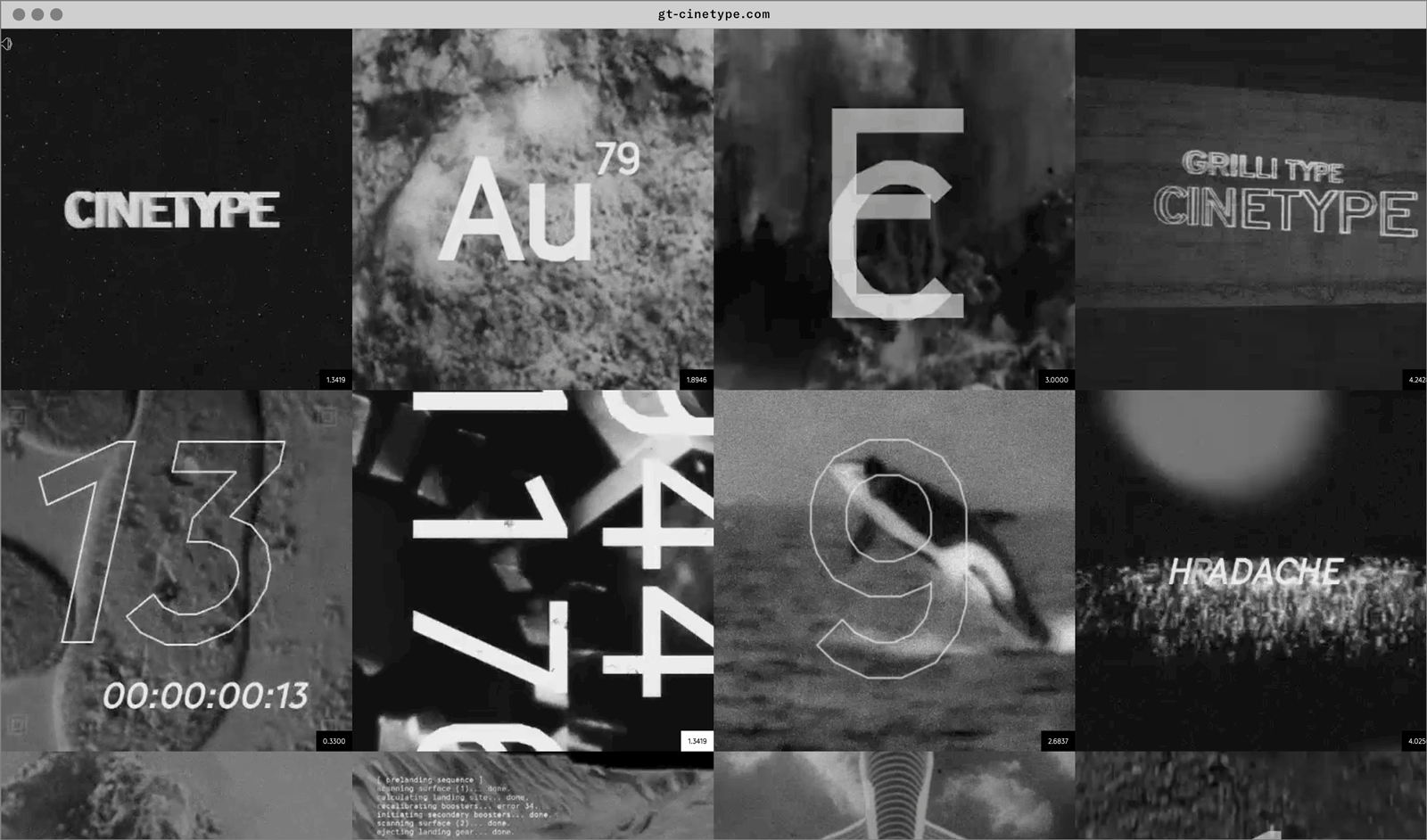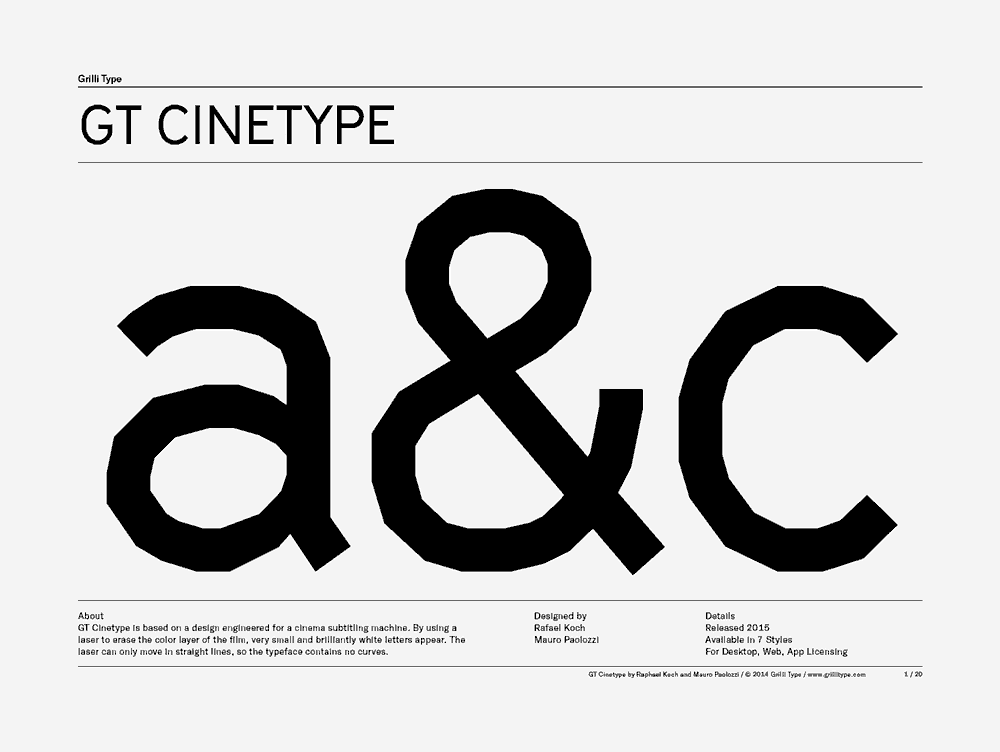GT Cinetype
Family overview
- Light Italic
- Regular Italic
- Bold Italic
- Mono
- LightRaiders of the Lost Ark 1981 by Steven Spielberg with Harrison Ford, Karen Allen, Paul Freeman
- Light ItalicThis Is Spinal Tap 1984 by Rob Reiner with Rob Reiner, Michael McKean, Christopher Guest
- RegularPumping Iron 1977 by George Butler with Arnold Schwarzenegger, Lou Ferrigno, Matty Ferrigno
- Regular ItalicBefore Sunrise 1995 by Richard Linklater with Ethan Hawke, Julie Delpy, Andrea Eckert
- BoldInglourious Basterds 2009 by Quentin Tarantino with Brad Pitt, Diane Kruger, Eli Roth
- Bold ItalicAlien 1979 by Ridley Scott with Sigourney Weaver, Tom Skerritt, John Hurt
- MonoNight of the Living Dead 1968 by George A. Romero with Duane Jones, Judith O’Dea, Karl Hardman
- Settings
Typeface information
GT Cinetype is based on a design engineered for a cinema subtitling machine. By using a laser to erase the color layer of the film, very small and brilliantly white letters appear. The laser can only move in straight lines, so the typeface contains no curves.
Typeface features
OpenType features enable smart typography. You can use these features in most Desktop applications, on the web, and in your mobile apps. Each typeface contains different features. Below are the most important features included in GT Cinetype’s fonts:
- CASE
- Case sensitive forms
(ROBOCOP)
- ONUM
- Oldstyle figures
10.03.1985
Typeface Minisite


- Visit the GT Cinetype minisite to discover more about the typeface family’s history and design concept.
GT Cinetype in use





